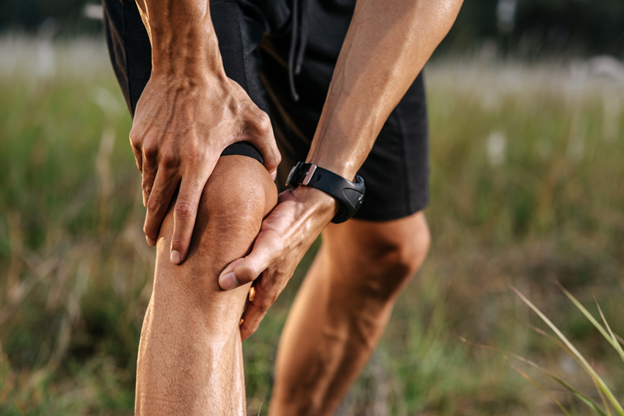Bursitis is a common condition that involves inflammation of the bursa—a small, fluid-filled sac that cushions the bones, tendons, and muscles near your joints. While bursitis can occur in many areas of the body, it most commonly affects the shoulder, elbow, and hip. If left untreated, bursitis can result in significant pain and discomfort, but with proper care, the condition can usually be managed successfully.
What is Bursitis?
Bursitis occurs when one or more of the bursa sacs in the body become inflamed. The bursa acts as a cushion to reduce friction and allow smooth movement of joints. When the bursa becomes irritated, it swells, which causes pain and restricts movement. This condition is often caused by repetitive motions or prolonged pressure on a particular joint.
Symptoms of Bursitis
The most common symptom of bursitis is pain in the affected joint, which may become more intense when the joint is moved. Other symptoms of bursitis include:
- Swelling: The affected area may become swollen and tender to the touch.
- Pain: The pain may be sharp or dull and typically worsens with movement.
- Reduced Range of Motion: As the bursa swells, the movement of the joint may be limited.
- Warmth: The affected joint may feel warm to the touch due to inflammation.
Common Causes of Bursitis
- Repetitive Movement or Overuse: One of the most common causes of bursitis is repetitive motion, especially in occupations or activities that require frequent bending, lifting, or twisting. For example, athletes or people who work in manual labor jobs may be at higher risk.
- Trauma or Injury: Direct injury to a joint, such as a fall or knock, can cause the bursa to become inflamed.
- Infection: In rare cases, bursitis can be caused by an infection, particularly if the bursa becomes punctured or injured.
- Chronic Conditions: Certain conditions such as rheumatoid arthritis or gout can increase the risk of developing bursitis. These diseases cause inflammation throughout the body, including the bursa.
- Age and Gender: Older adults are more likely to develop bursitis, and it tends to affect both men and women equally.
Diagnosis of Bursitis
A healthcare provider will diagnose bursitis through a physical exam, asking about your symptoms and medical history. If the diagnosis is unclear, your doctor may recommend imaging tests such as:
- X-rays: To rule out other joint issues like fractures or arthritis.
- Ultrasound: To visualize the inflammation of the bursa.
- MRI: For a detailed image of the soft tissues around the joint.
In some cases, your doctor may perform a joint aspiration, where a needle is used to remove fluid from the affected bursa to check for signs of infection.
Treatment for Bursitis
Treatment for bursitis aims to reduce inflammation and relieve pain. The treatment plan will depend on the severity of the condition.
- Rest and Ice: Resting the affected joint and applying ice packs can help reduce inflammation and alleviate pain.
- Nonsteroidal Anti-Inflammatory Drugs (NSAIDs): Over-the-counter medications can help manage pain and inflammation.
- Physical Therapy: Physical therapy may be recommended to help restore range of motion and strengthen the muscles around the affected joint.
- Corticosteroid Injections: If pain and inflammation persist, your doctor may inject corticosteroids directly into the bursa to reduce swelling and pain.
- Surgical Intervention: In severe or persistent cases, surgical removal of the bursa may be necessary. This is usually a last resort if all other treatments fail.
Preventing Bursitis
Preventing bursitis involves minimizing repetitive movements and avoiding prolonged pressure on the joints. Other tips include:
- Stretching: Warm up before exercising and incorporate stretches into your routine to reduce strain on the joints.
- Posture: Maintain good posture to avoid putting excessive pressure on your joints.
- Protective Gear: If you engage in activities with a risk of joint injury, such as sports or manual labor, use protective gear to reduce impact.
Conclusion
Bursitis is a painful condition, but with proper treatment and lifestyle modifications, most people recover fully. If you experience persistent joint pain or swelling, it’s essential to see a healthcare provider for an accurate diagnosis and treatment plan. Taking steps to prevent future episodes, such as modifying repetitive activities, can help protect your joints in the long term.
Consult us today at Sree Hospital for expert guidance!



